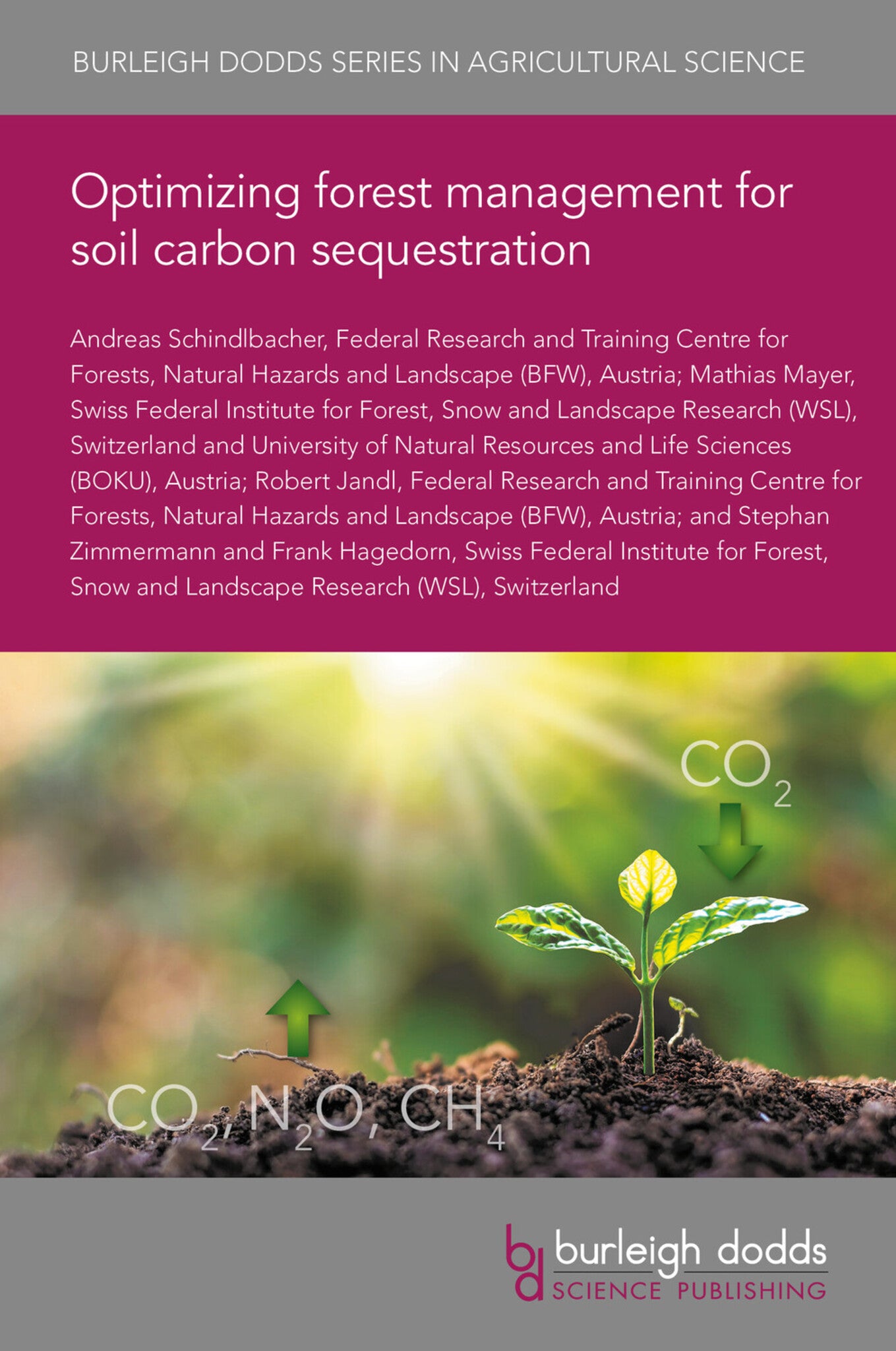We're sorry. An error has occurred
Please cancel or retry.
Optimizing forest management for soil carbon sequestration
Dr andreas schindlbacher,
Dr mathias mayer,
Dr robert jandl,
Dr stephan zimmermann,
Dr frank hagedorn
Regular price
£25.00
Sale price
£25.00
Regular price
£25.00
Unit price
/
per
Sale
Sold out
Re-stocking soon
This chapter summarizes the effects of different forest management practices on soil organic carbon (SOC) storage and discusses whether and how they can be optimized under climate change. Afforesta...
Read More

Some error occured while loading the Quick View. Please close the Quick View and try reloading the page.
Couldn't load pickup availability
- Format:
-
07 November 2022

This chapter summarizes the effects of different forest management practices on soil organic carbon (SOC) storage and discusses whether and how they can be optimized under climate change. Afforestation and reforestation of C depleted arable soils typically increase SOC stocks, but on C-rich soils in former grasslands, afforestation can even lead to SOC losses. Tree species selection also affects SOC storage. Coniferous forests store more C in the organic layer, whereas broadleaf forests contain more C in the mineral soil. The total SOC stocks seem comparable between forest types. Tree harvesting operations lead to transient SOC losses. However, lower-intensity harvests that retain parts of the tree residues on site, reduce SOC losses compared to whole-tree harvests. Liming leads to a loss of the organic layer, but associated C gains in the mineral soil are uncertain and site-dependent. In the face of climate change, forest management should increase ecosystem resistance and resilience to maintain SOC stocks. Stand thinning, for example, has no significant effect on SOC stocks, but leads to a higher stand resistance against e.g. storms. The promotion of tree species diversity increase forest resilience against climate extremes, thereby reducing the risk for SOC losses through forest diebacks and disturbances. In summary, minimizing the threat of intensive harvest operations for soils and enhancing the resilience of forest against climate extremes and associated disturbances seem the most effective measures for a soil C friendly forest management.

Price: £25.00
Publisher: Burleigh Dodds Science Publishing
Imprint: Burleigh Dodds Science Publishing
Series: Burleigh Dodds Series in Agricultural Science
Publication Date:
07 November 2022
ISBN: 9781801467117
Format: eBook
BISACs:
TECHNOLOGY & ENGINEERING / Agriculture / Agronomy / Soil Science, Soil science and management, TECHNOLOGY & ENGINEERING / Agriculture / Agronomy / Crop Science, TECHNOLOGY & ENGINEERING / Agriculture / Sustainable Agriculture, Agronomy and crop production, Sustainable agriculture

- 1 Introduction
- 2 Forest management and soil carbon sequestration
- 3 Case study: forest soil carbon storage in Central Europe mountain regions
- 4 Conclusion
- 5 Future trends in research
- 6 Where to look for further information
- 7 References



